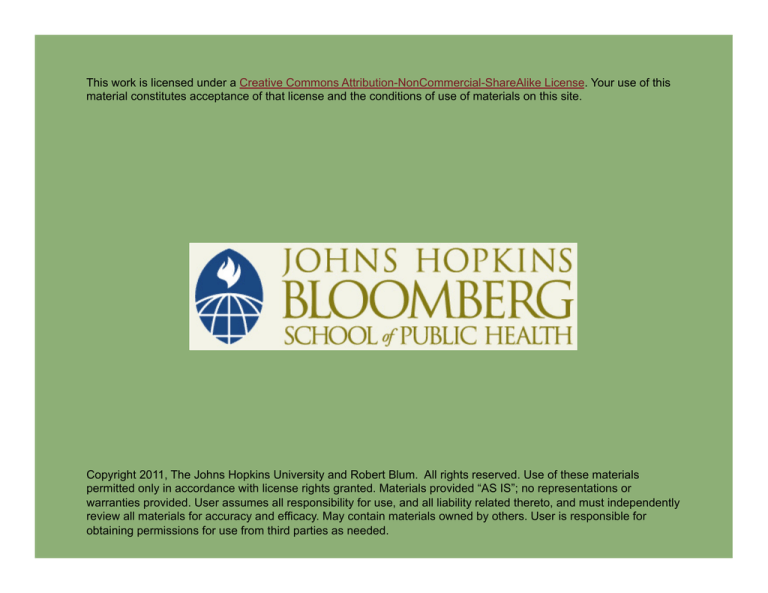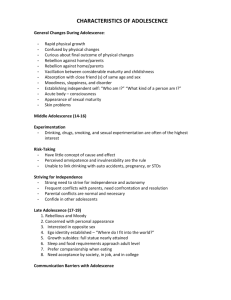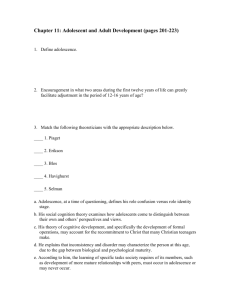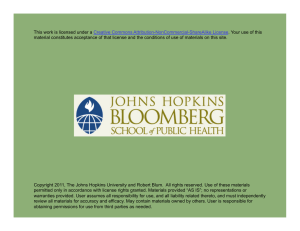
This work is licensed under a Creative Commons Attribution-NonCommercial-ShareAlike License. Your use of this
material constitutes acceptance of that license and the conditions of use of materials on this site.
Copyright 2011, The Johns Hopkins University and Robert Blum. All rights reserved. Use of these materials
permitted only in accordance with license rights granted. Materials provided “AS IS”; no representations or
warranties provided. User assumes all responsibility for use, and all liability related thereto, and must independently
review all materials for accuracy and efficacy. May contain materials owned by others. User is responsible for
obtaining permissions for use from third parties as needed.
Section B
A Generation of Firsts
Today’s Youth: A Generation of Firsts
The first generation to understand terrorism as a domestic
issue
The first generation to fully compete in a global economy
The first generation to experience instantaneous
communication with the world
3
Today’s Youth: A Generation of Firsts
The first generation to grow up with the majority living a
portion of childhood in a single-parent household
The first generation to live its entire life in the shadow of AIDS
The first generation to witness and experience the
translocation of an entire American city
4
Social Learning vs. Gender Differences
In 1990, we believed gender-specific behaviors were
predominantly the result of social learning
Today, we know that neuroendocrine differences have a
significant impact on gender differences related to
processing, learning, and behavior
5
A Shift of Frameworks
In 1990, we had a risk or deficit model as the predominant
framework for youth programs
Today, we have a positive youth development model that
incorporates protective as well as risk factors
6
A Shift in Understanding Development
In 1990, we had an invariate, stage-based conceptualization
of adolescent development
Today, we have an ecological model that grounds
development within the contexts of a young person’s life
7
A Shift in Understanding Parental Roles
In 1990, we believed that parental influence diminished as
peer influence increased in adolescence
Today, we understand that parents are as critical during
adolescence as they were in childhood, even as peer
influence increases
8
Adolescence is an Age of Opportunity
Pubertal development brings new capacities, a new body
image, and a new sense of self
Cognitive development brings with it the capacity to look at
a problem from multiple perspectives and to explore
competing options to its solution
9
Adolescence is an Age of Opportunity
Social development brings with it a broader set of influences
than just family: peers, teachers, religious leaders
Moral development brings with it idealism, social
engagement, and volunteerism
10
Viewing Adolescents in a Social Context
To tap the potential as well as to address the problems of
youth, we need to view the adolescent nested in a wide set of
social contexts and we need to understand how they
influence both health and morbidity
11






